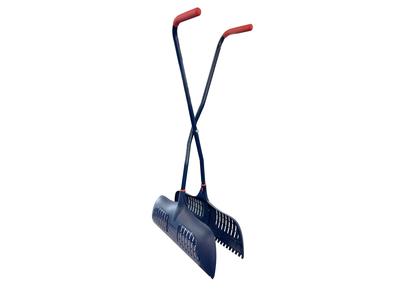
Dig for victory?
For some, digging the vegetable beds and forking around the borders is something they find brings warmth and satisfaction during the winter months. Digging soil over to bury weeds and allow frost to break up the clods is now seen as a little old-fashioned, but if you’re one of the many who find this task therapeutic, who am I to judge?
No-dig methods are now widely embraced by gardeners, by which a layer of compost mulch is laid over the soil around 4-6cm (around 2 inches) deep. In spring, you can then sow or plant directly into the mulch, by which point the cardboard will have rotted down enough to let the roots through into the soil. To really help weeds from pushing through, put a layer of cardboard down first. Over time, the worms work this material down into the soil providing a nice friable surface while enriching the soil life and structure.
No-dig beds work best at first if you have dedicated paths around them. This means you avoid compacting the earth by standing on it, so the soil stays nice and airy for good root growth. Depending on your soil, lightly stepping on them in summer may be ok, but wet winter soils can be really prone to compaction. If you are making no-dig beds, try to make them no wider than 1.2m (4 feet), so you can easily reach the middle of the bed without having to step on them.
This method can also be used to clear grass and most perennial weeds too. Add a few layers of cardboard, and then an extra thick layer of whatever composted or chipped organic matter you can find over the top, about 15cm (6 inches) deep once trodden down. Tree surgeons are often happy to drop off a big load of woodchip, but try to avoid conifer chippings.
Provided your compost isn’t full of weeds, the no-dig approach also hugely reduces weed growth. Most soil is full or viable seeds, just waiting for the right conditions to germinate. This is known as the soil seed bank. The seeds of dock are understood to remain viable in the soil for up to 70 years! By not digging over the soil, you’re not bringing up those seeds to the surface, where light triggers them to germinate. And then by mulching with compost, you keep most surface seeds buried a little too deep to emerge, and any that do can be hoed off easily in the crumbly compost.
All the time spent turning compost piles, collecting cardboard, sourcing and barrowing mulches doesn’t necessarily mean that no-dig is easier than digging and forking over. However, feeding the soil with organic matter and not digging it over, boosts the natural soil web of life, such as worms, microbes and fungi. Not only do these also help support good plant health, but also make for healthy soil structure that better holds water, air and nutrients for healthy vegetable roots.
Dig that!


